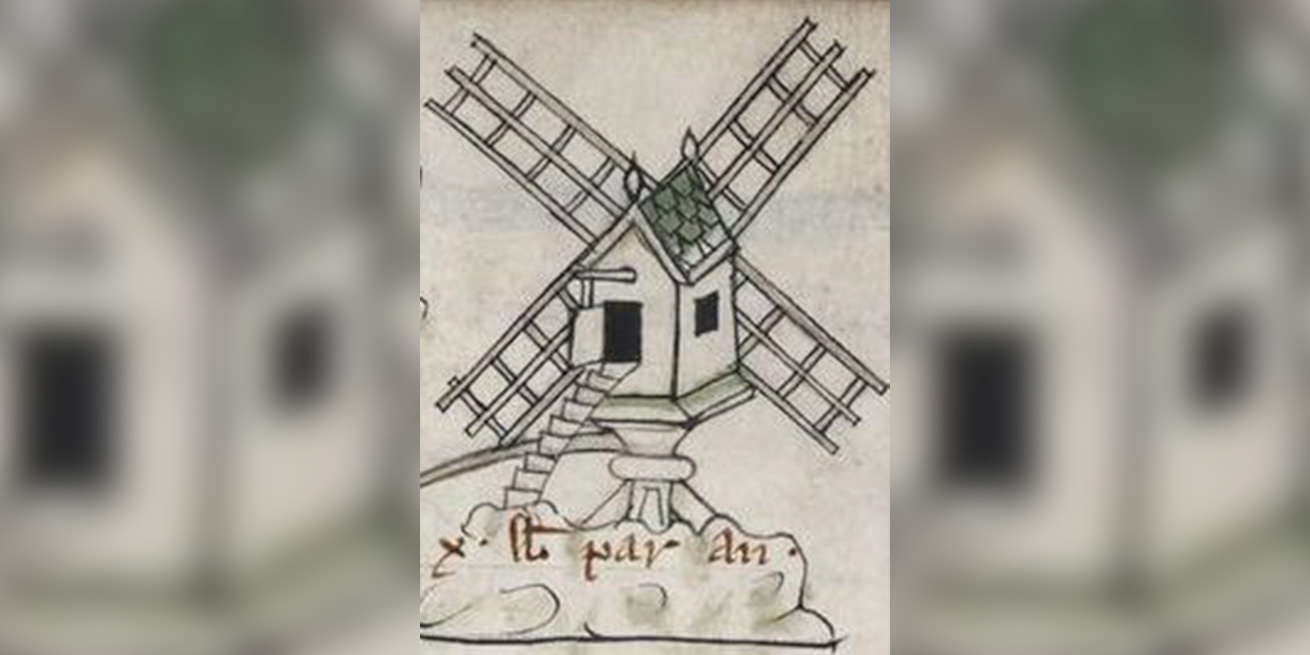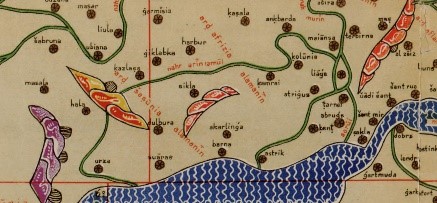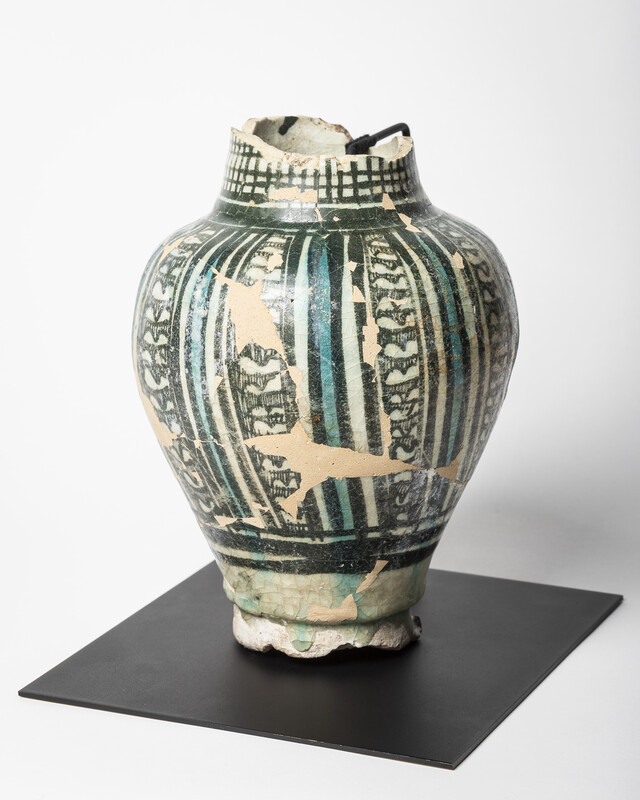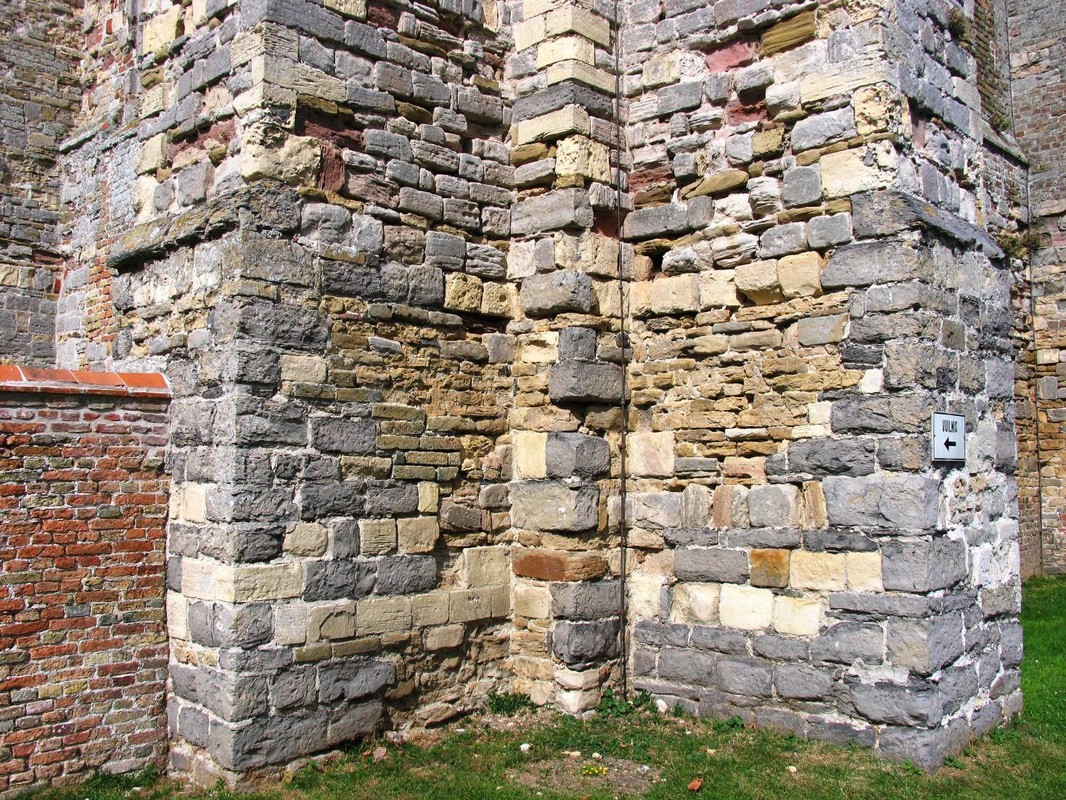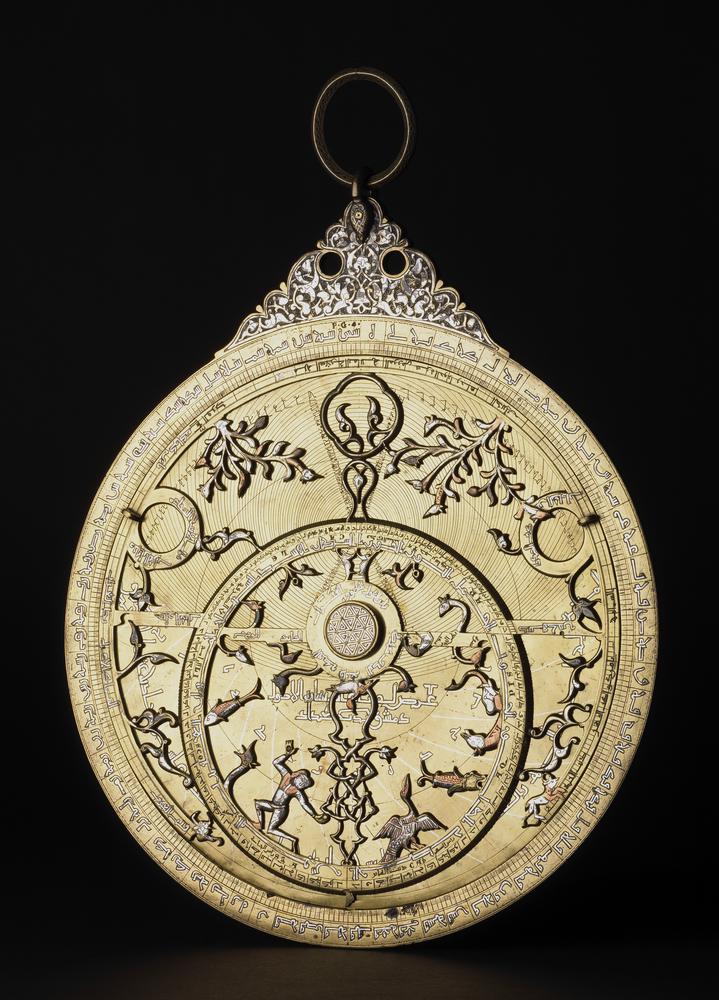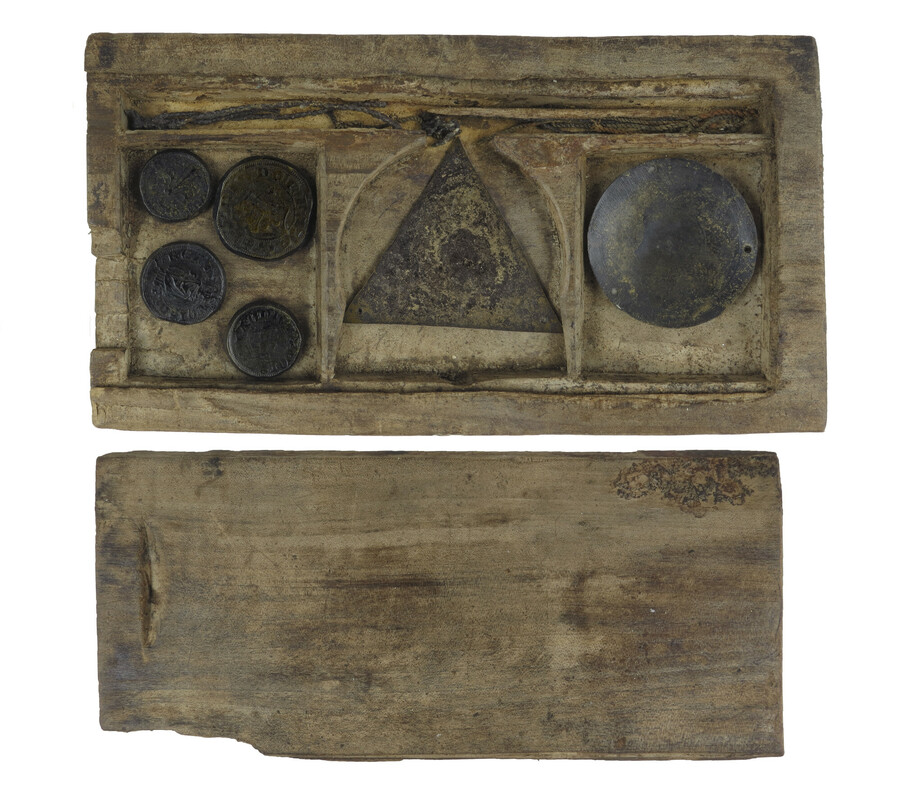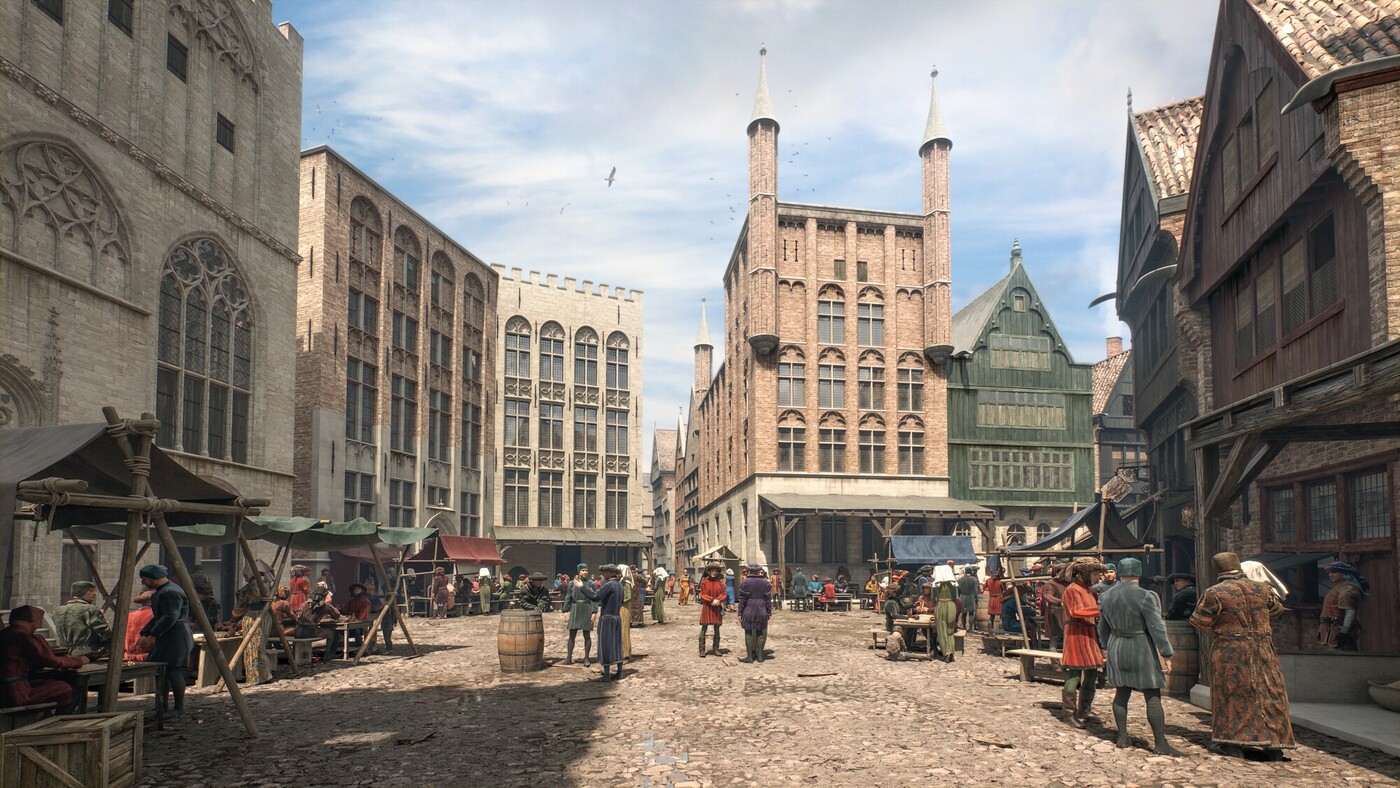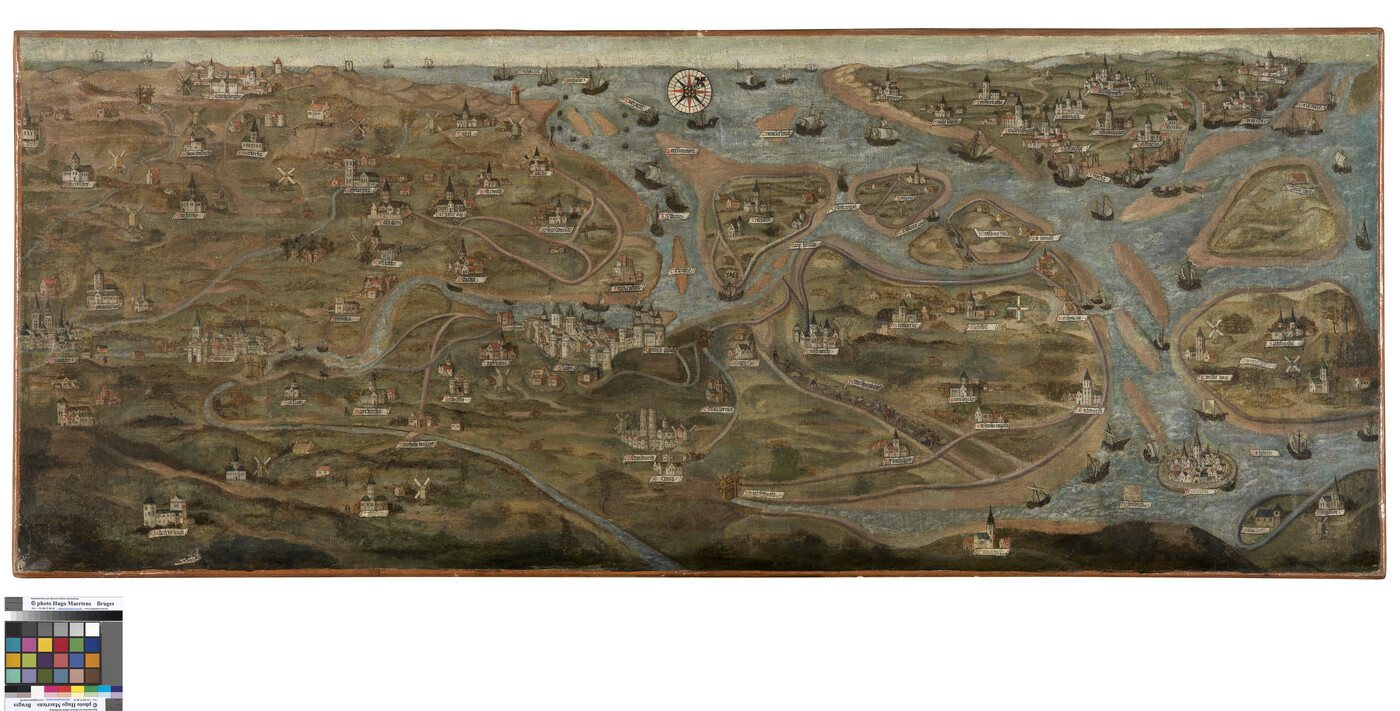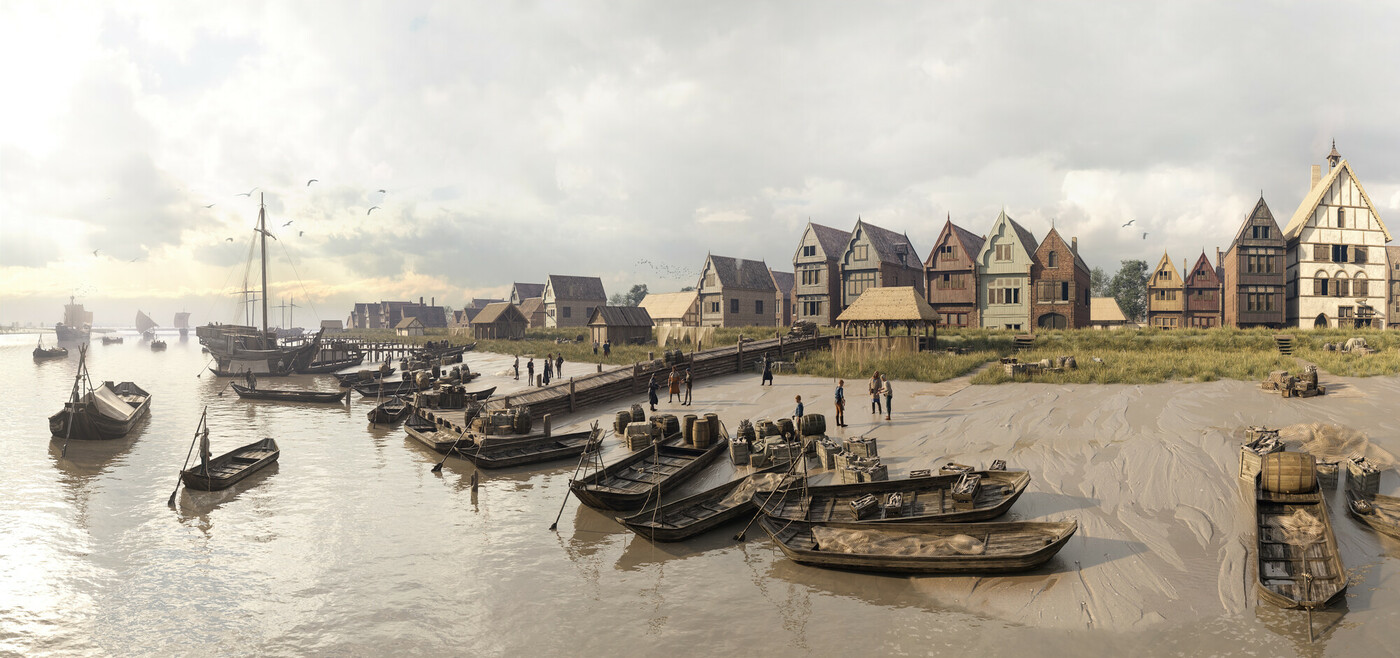
Reconstruction of Monnikerede, one of the flourishing Zwin ports | Ghent University – Timescope – Westtoer
The Lost Harbours of the Zwin
Bruges, Linked to the Sea
Mude, Hoeke or Monnikerede. Those names do not mean much to us today, but in the Middle Ages they were bustling harbour towns along a tidal channel of the North Sea: the Zwin. Those secondary ports, together with the cosmopolitan town of Bruges insured communication with all important European ports.
The medieval character of Bruges still shows how important the city was as a centre of trade, industry and art. But it could only play that role through its exceptional network of secondary ports, situated along a great tidal channel: the Zwin. Through that channel sailed ships, goods, people and ideas in and out of Flanders. In this way a unique trade environment was established.
After a flourishing period in the 13th and 14th centuries, an irreversible decline set in from the end of the 15th century. The merchants left because of the political and economic unrest in Bruges, the Zwin channel silted up and together with the channel the prosperity of Bruges and the secondary ports also disappeared.
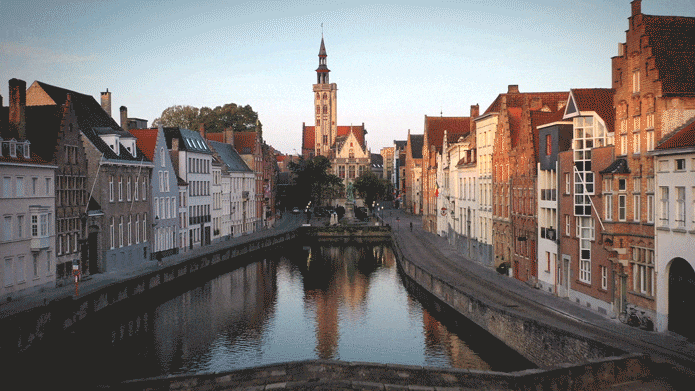
Ghent University – Timescope – Westtoer
Reconstruction of the Spiegelrei: heart of port activities in Bruges (1430).
Bruges, Linked to the Sea
Bruges already existed as a port in the Roman era, but only in the Middle Ages did the town expand into a great trade centre. The town had one great challenge: it was not on the coast and so constantly had to maintain the link with the North Sea. That was done originally via narrow waterways: first a tidal channel from Blankenberge to Bruges, then a canal dug to a tidal channel near Oostkerke and then an extension of that canal to a bay near present-day Knokke.
Perhaps as a result of a flood in the early 12th century a new, deep and wide tidal channel was created to the north-east: the Zwin. This gave Bruges for three centuries a good sea connection with the rest of maritime Europe and also with the rest of the then known world. Along that channel a series of harbour towns sprang up from the middle of the 12th century. Large ships could moor there, and numerous foreign merchants were based there. Goods were transferred to smaller ships with a shallower draught which via a lock at Damme and from there along the Reie Canal could reach Bruges. In this way the Zwin became a twenty-kilometre-long economic artery for the town.
Moreover, Bruges was on an important overland trade route. At that crossroads of sea and land routes, the town was able to develop into an economic, artistic and sometimes even a political metropolis in medieval Europe.
Focal points
Discover more on this topic
Brugge, een middeleeuwse metropool 850-1550
Sterck en De Vreese, 2020.
Verdwenen zwinhavens
Westtoer, 2021.
Aan de rand van de wereld. Hoe de Noordzee ons vormde
De Bezige Bij, 2021.
Brugge. De geschiedenis van een Europese stad
Lannoo, 1999.
Brugge. het verhaal van een stad
Stichting Kunstboek, 2016.
Hanzekooplui en Medicibankiers. Brugge, wisselmarkt van Europese culturen
Stichting Kunstboek, 2002.
Noordzeehandel en middeleeuws Vlaanderen, ca. 1000 – ca. 1300. De families de Russe, van Gent en de Straten in Sint-Omaars, Brugge en Temse
Skibris, 2021.
Fiction
Onrustvlinder
Manteau, 2008.
De Opkomst van Niccolo
Uitgeverij Luitingh-Sijthoff, 1988.
Reizen van Tristan. Brugge
Casterman (nr. 5), 2011.
